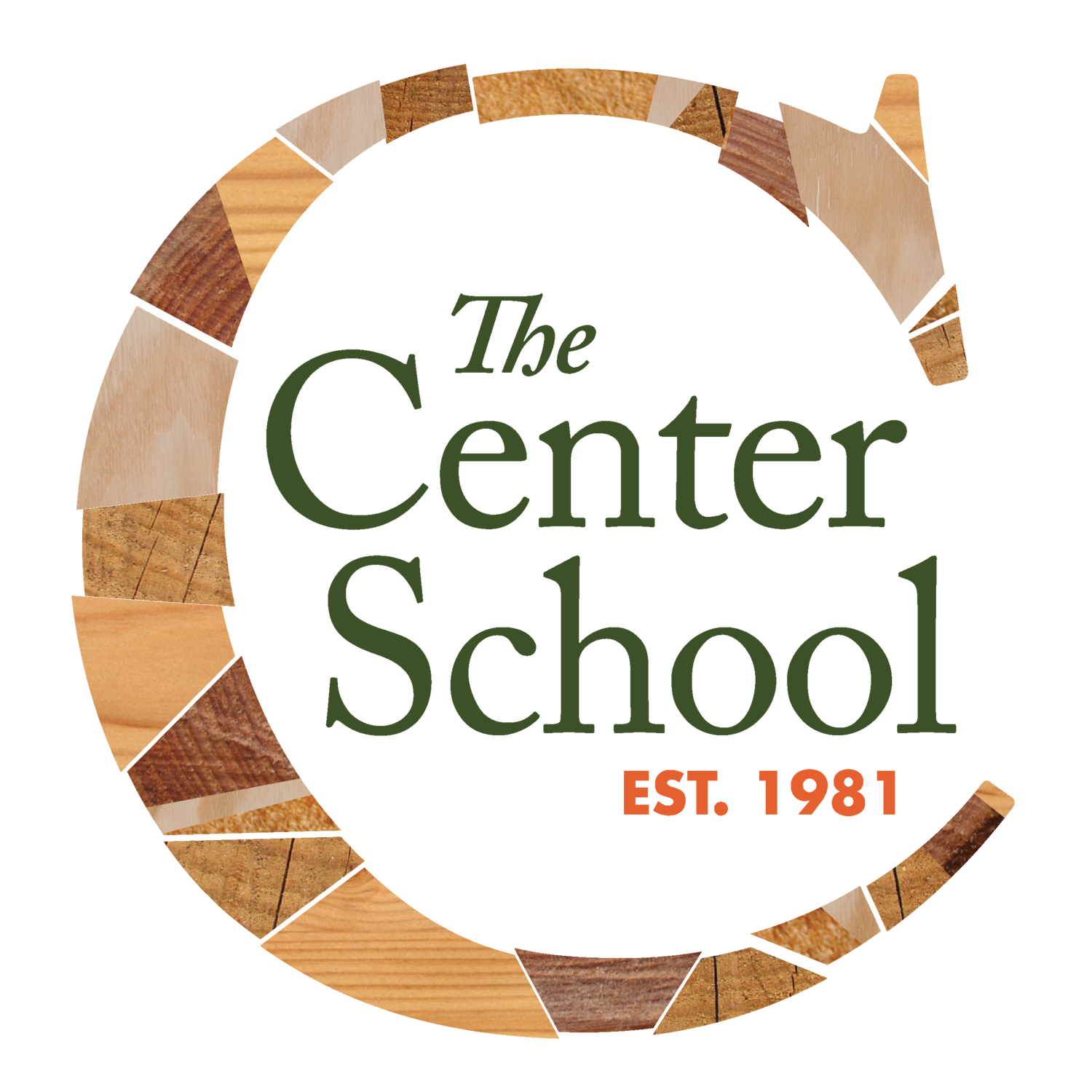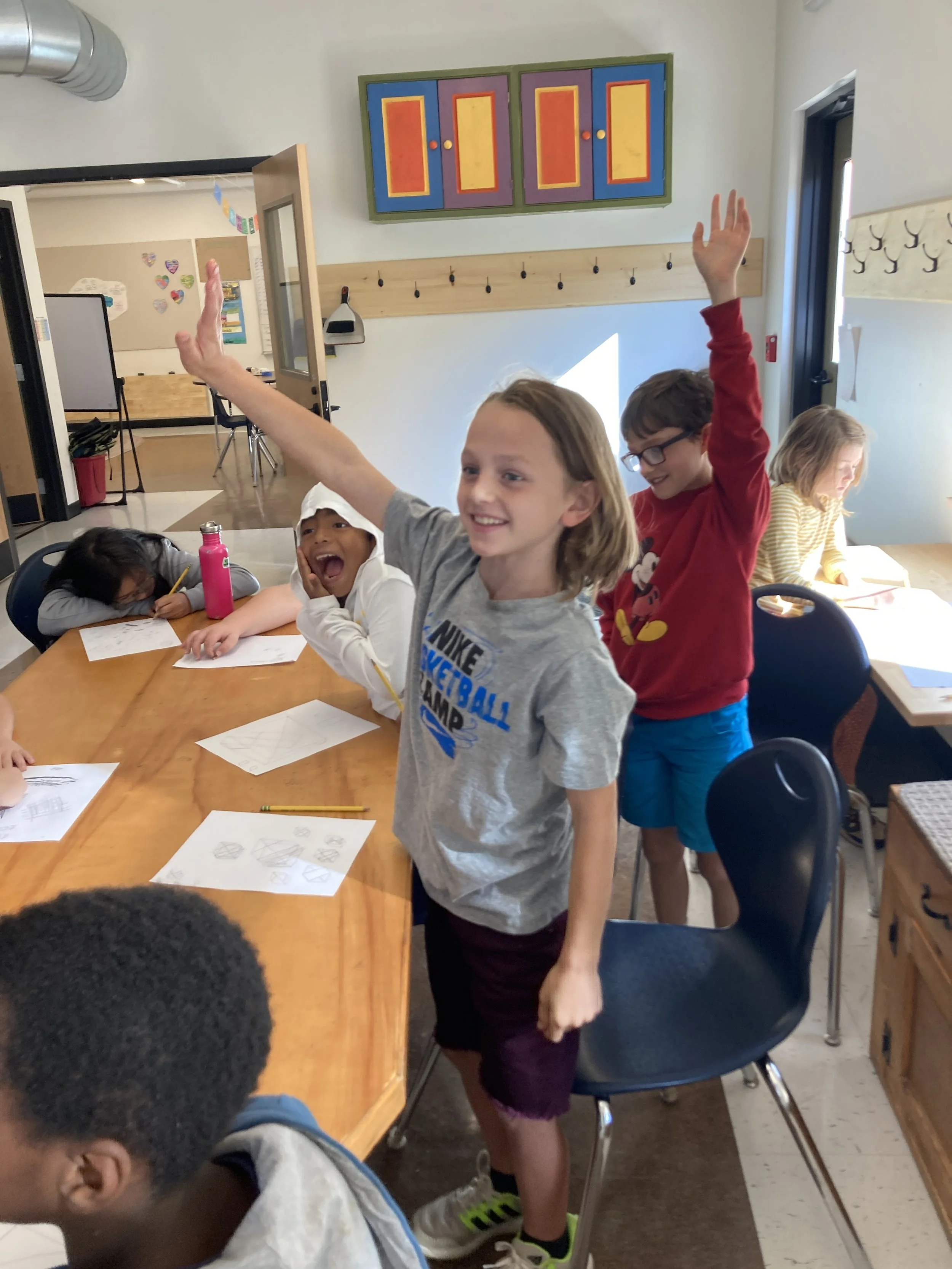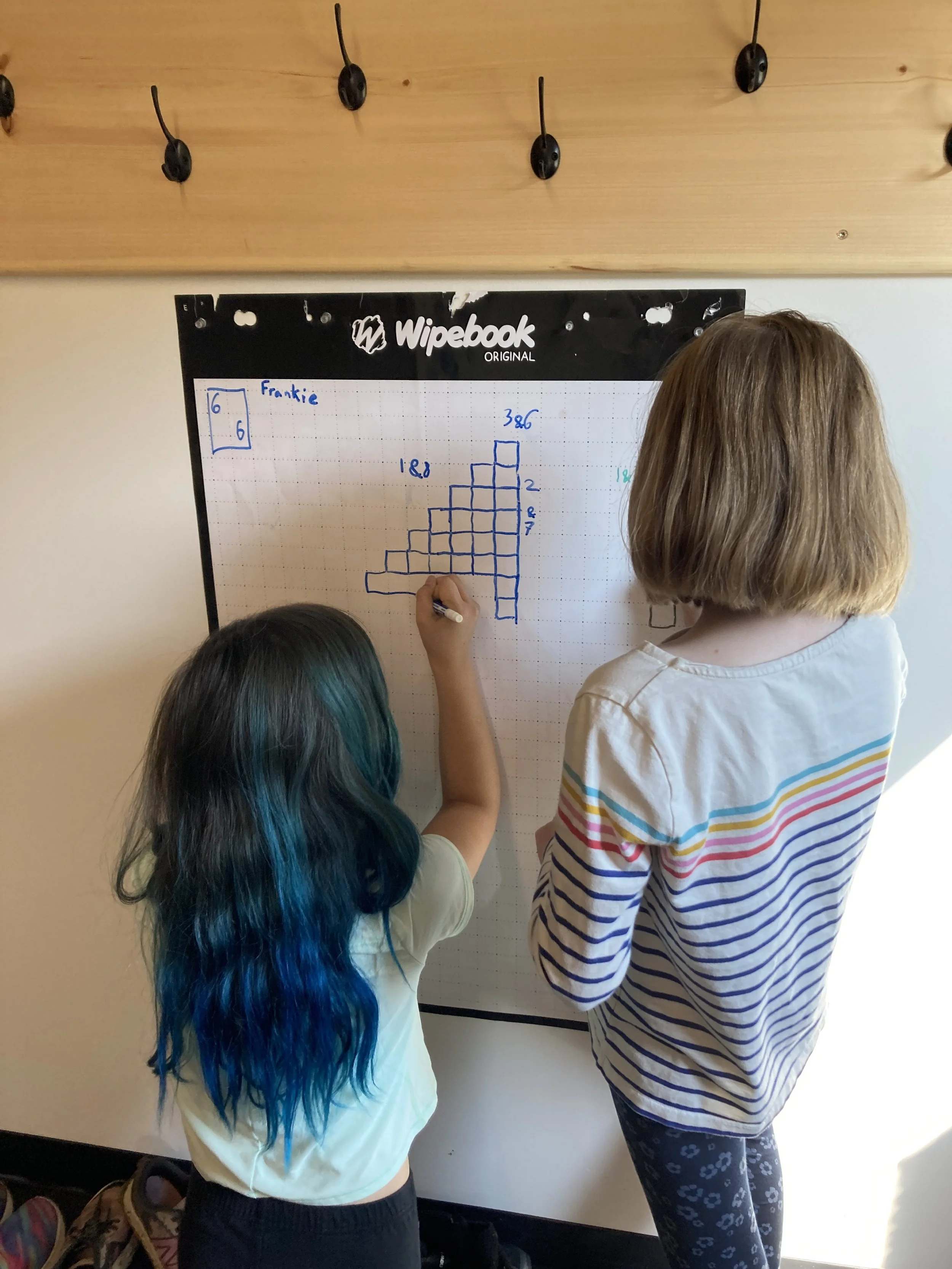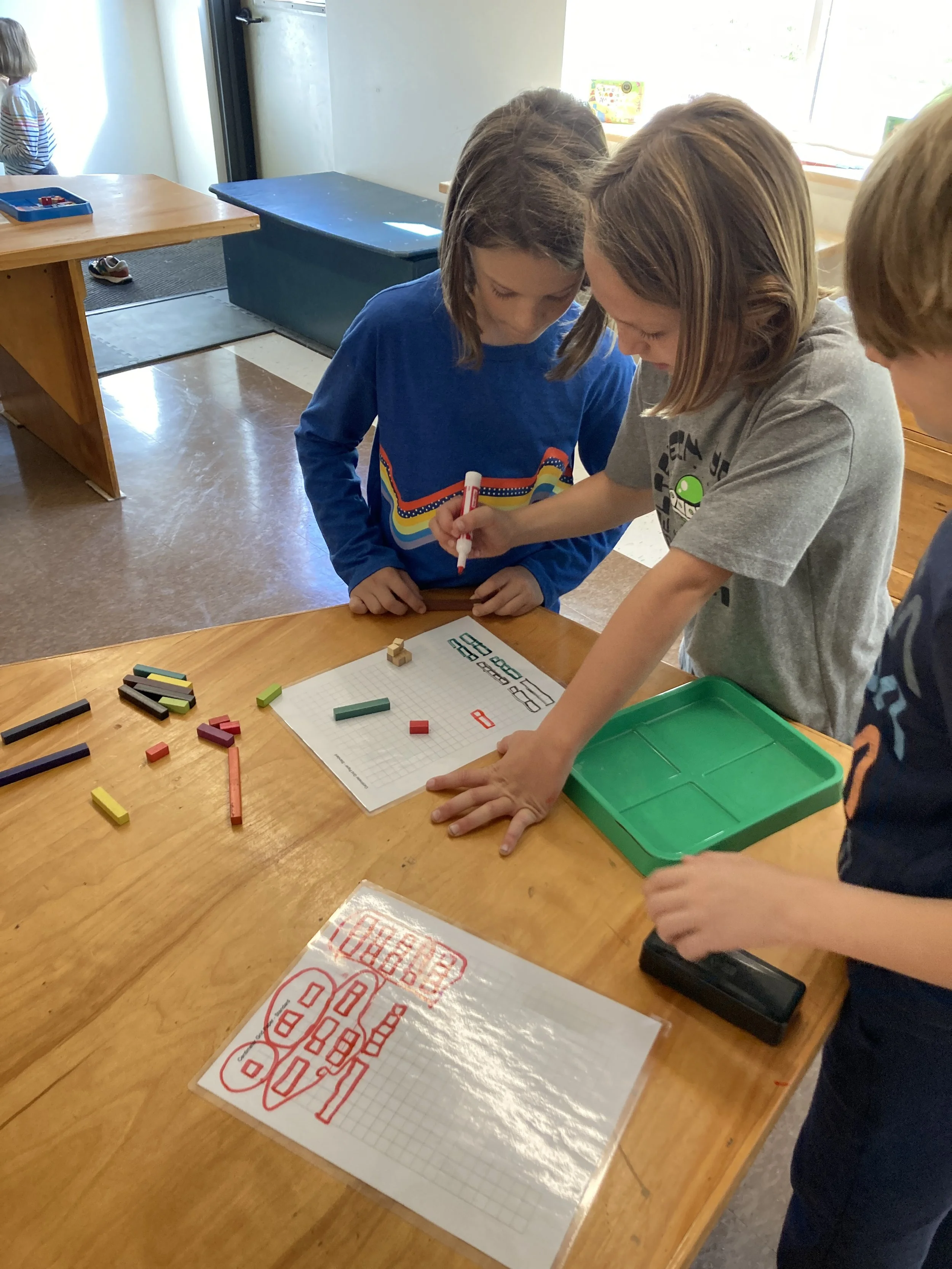Building Mathematicians in the Middles
In the Middles, we love math. We believe that every student has a math brain and every student can be successful in math. We know that every brain learns differently and we engage with numbers in as many different ways as possible. Our goal in the Middles is to help each student begin to articulate how they see numbers, groups, and patterns, and we prioritize students being able to explain their thinking over getting the right answer. The majority of our math work is done in pairs or small groups, which helps students practice being flexible and approaching problems from different perspectives.
In the Middles, we are inspired by YouCubed’s Week of Inspirational Math and Peter Liljedahl’s Building Thinking Classrooms (BTC) approach to teaching math. BTC, a framework developed from over 15 years of research by Professor Liljedahl, emphasizes students working in small groups, on non-permanent (dry erase) vertical surfaces. Having an easily erasable surface on which to write can often encourage more risk-taking, and hanging the surface vertically, with the students standing up, prevents students from disengaging. Math involves movement, asking questions, using manipulatives, and drawing, writing, or building your ideas.
The Middles begin their year in math by participating in activities from Week of Inspirational Math (WIM), a living project created by Jo Boaler at Stanford University’s Graduate School of Education. WIM was designed to get students excited about math at the very start of the year, through predominantly visual and creative “low-floor, high-ceiling” group math tasks. These math tasks invite all types of learners into mathematical thinking and help set the tone for an inclusive year of math. The open-ended, widely accessible tasks also encourage students to understand that in the Middles, math is not a race. We emphasize “slow, deep thinking” and give students as much time as they need to solve problems.
Last year, the Middles piloted Illustrative Math (IM), a math curriculum rooted in the latest research on brain science and math learning. IM is a task-based math curriculum that engages students in daily partner and small group work. These tasks serve to help students understand the “why” of math, not just the “what”. For example, in 4th grade, we begin the year by finding the area of different rectangles as a way of refreshing our understanding of factors and multiples. This hands-on approach to mathematical learning encourages students to think about problems from many different angles and break down complicated problems into simpler parts. Students approach these problems with inch tiles, grid paper, and Wipebooks allowing them to visualize large numbers and physically separate them into smaller factor pairs.
After our pilot year, and with the help of our math learning consultant, Karen Schweitzer, the school made the decision to implement IM in grades 2-8 this year. Keep an eye on this space for updates from different ages and grades on how this rigorous and responsive curriculum is going throughout this first year!



